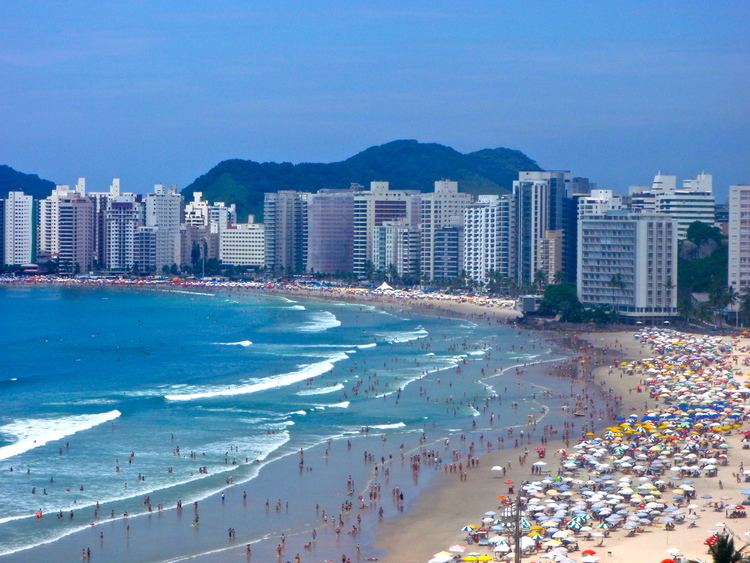Founded June 19, 1934 Area 143.6 km² Population 138,753 (2010) | Metropolitan Region Baixada Santista Anniversary June 30 Local time Saturday 6:06 AM | |
 | ||
Weather 28°C, Wind SW at 8 km/h, 83% Humidity Points of interest Acqua Mundo, Fortaleza de Santo Amaro da, Praia da Enseada, Praia do Tombo, MUSEU DE CIÊNCIA | ||
Guaruj santo amaro island s o paulo state of brazil biff palmer and deborah clegg
Guarujá ([ɡwaɾuˈʒa]) is a municipality in the São Paulo state of Brazil. It is part of the Metropolitan Region of Baixada Santista. The population is 311,230 (2015 est.) in an area of 143.58 km2 (55.44 sq mi). This place name comes from the Tupi language, and means "narrow path". The population is highly urbanized.
Contents
- Guaruj santo amaro island s o paulo state of brazil biff palmer and deborah clegg
- Map of GuarujC3A1 State of SC3A3o Paulo Brazil
- Geography
- Economy
- Twin towns Sister cities
- Sports
- References
Map of Guaruj%C3%A1 - State of S%C3%A3o Paulo, Brazil
Geography
Guarujá is located in Santo Amaro island, situated in São Paulo shore. Its main economic sources are seasonal tourism and port related activities.
Guarujá is a popular weekend destination for families from São Paulo, who can get there driving in less than one hour (through the Imigrantes highway). Traffic gets heavy during the evening on the holidays.
Guarujá has a borough called Vicente de Carvalho, in tribute to the Parnasianist poet.
A nickname for the city is "The Pearl of the Atlantic".
Guarujá is known for its famous beaches such as Guaiúba, Tombo, Astúrias, Pitangueiras, Enseada, Pernambuco, Perequê, São Pedro, Tijucopava, Iporanga, Praia Branca and Praia Preta.
Economy
Guaruja, its history, infrastructure and proximity to the country's most populous city, provides strong attractive real estate and tourism. Much of the region on the coast, the beaches near the center (mainly Asturias Pitangueiras, Enseada, and Tombo) are taken by buildings devoted to the seasonal population, who arrives mostly in summer. Tourism, therefore, is the most important component that moves the economy.
The other part, relevant and non-seasonal, comes from the port (left bank of the Port of Santos) and related activities, such as transportation. Due to its proximity to Cubatao (largest industrial district in the country) and ports, there is also interest in industrial occupation in the region, started in 1976 by Dow Chemical, still the only major industry to occupy the region.
According to the IBGE of 2006 the production of wealth in the service area in the city, added that year, US$1.820 billion, equivalent to 0.14% in participation in the Brazilian GDP.
Twin towns – Sister cities
Guarujá is twinned with:
Sports
The Estádio Municipal Antônio Fernandes is a football (soccer) stadium located in the city. Associação Desportiva Guarujá play their home games at this stadium. The Bosnia and Herzegovina national football team picked Guarujá as their base during the 2014 FIFA World Cup in Brazil.
